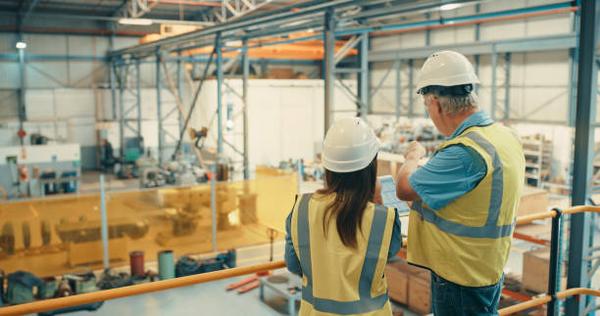Warehouse Design and Organization Tips for Better Productivity
Warehouse design and organization are crucial factors that can significantly impact productivity in a warehouse setting. A well-designed and organized warehouse can streamline operations, improve efficiency, and ultimately lead to better productivity levels. Here are some tips for designing and organizing your warehouse for optimal productivity.
Firstly, it is essential to consider the layout of your warehouse. The layout should be designed in a way that minimizes travel time and distance between different areas of the warehouse. This can be achieved by grouping similar items together, placing high-demand items near the shipping area, and ensuring that there are clear pathways for workers to move around efficiently.
In addition to layout considerations, it is important to make use of vertical space in the warehouse. By utilizing tall shelving units or mezzanine levels, you can maximize storage capacity without taking up additional floor space. This can help prevent clutter and congestion on the warehouse floor, making it easier for workers to navigate through the space.
Another important aspect of warehouse design is proper labeling and signage. Clear labeling of shelves, aisles, and storage locations can help workers quickly locate items they need without wasting time searching. Additionally, using color-coded labels or signs for different product categories fulfillment center near me can further enhance organization and efficiency in the warehouse.
When it comes to organizing inventory within the warehouse, implementing an efficient system is key. Consider using barcode scanning or RFID technology to track inventory levels accurately and ensure that products are easily accessible when needed. Regularly conducting inventory audits can also help prevent stockouts or overstock situations that could disrupt workflow.
Furthermore, creating designated work zones within the warehouse can help streamline operations and improve productivity levels. For example, having separate areas for receiving shipments, picking orders, packing products, and shipping them out can prevent bottlenecks and confusion among workers. Clearly defining roles and responsibilities for each area will also help ensure that tasks are completed efficiently.
Lastly, investing in quality equipment such as pallet racks, conveyor systems, or automated material handling tools can further enhance productivity in a warehouse setting. These tools not only make tasks easier for workers but also increase throughput rates by speeding up processes like picking orders or moving heavy items.
In conclusion, proper design and organization of a warehouse are essential for maximizing productivity. By considering factors such as layout, vertical space utilization, labeling, inventory management, work zones, and equipment investment, you can create an efficient and productive warehouse environment that benefits both workers and customers alike. Implementing these tips may require some initial investment but will ultimately pay off in terms of increased efficiency, accuracy,and overall performance within your warehousing operations. By prioritizing these aspects,you’ll be able to create a well-organized workspace where employees feel empowered,safe,and motivatedto perform at their best every day. This will not only benefit your bottom line but also contribute positivelyto overall job satisfaction,reducing turnover rates,and fosteringa cultureof continuous improvementwithin your organization’s warehousing department. Remember,a well-organizedwarehouseis keytoa successful business operationso take these tips into considerationwhen planningyour next warehousedesignor reorganizationproject!
Fripp Warehousing
1005 Ethel St., Kelowna, British Columbia, V1Y 2W3
250-860-2511

